Key Takeaways
- Brightly Hued watches are making a bold statement in fashion accessories
- Understanding color theory enhances watch selection and styling
- Versatility of colorful watches allows for both casual and formal wear
- Sustainability trends are influencing watch color choices
- Matching Colorful watches with outfits requires attention to contrast and harmony
- Limited edition Brightly Hued watches are becoming highly collectible
- Social media has boosted the popularity of vibrant timepieces
- Personalization options are driving the Colorful watch market growth
The world of horology has undergone a vibrant transformation in recent years, with watches in many colors stepping into the spotlight and redefining wrist fashion. Gone are the days when timepieces were limited to classic silver, gold, or black.
Today’s watch enthusiasts are embracing a kaleidoscope of hues, from subtle pastels to eye-catching neons, making a bold statement with every glance at their wrists. This surge in polychromatic timekeeping isn’t just a fleeting trend; it’s a reflection of our evolving fashion sensibilities and a desire for self-expression through accessories.
As we dive into the colorful realm of modern watches, we’ll explore how this trend is shaping the industry, influencing personal style, and changing the way we view these functional pieces of art.
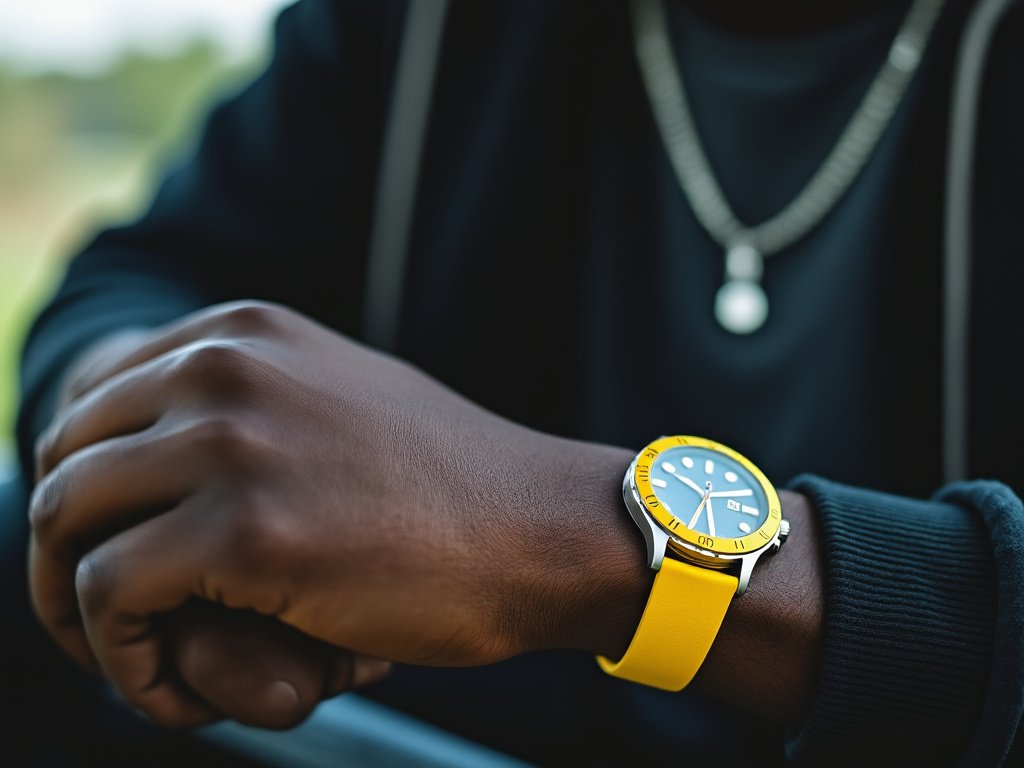
The Psychology of Color in Watchmaking
The integration of color psychology into watch design has revolutionized the industry, tapping into our subconscious preferences and emotional responses. Watch brands are now leveraging the power of hues to create timepieces that not only tell time but also convey personality and mood.
Emotional Impact of Watch Colors
Colors have an innate ability to evoke emotions and set the tone for our daily experiences. A vibrant red watch might instill confidence and energy, perfect for those high-stakes business meetings or passionate date nights.
Conversely, a cool blue timepiece can bring a sense of calm and tranquility, ideal for navigating stressful workdays or relaxing weekends by the sea.
The emotional resonance of watch colors extends beyond personal wear; it influences how others perceive us and can even affect our own behavior and decision-making processes.
Color Trends in the Watch Market
The watch market is experiencing a chromatic revolution, with color trends shifting as rapidly as the fashion industry itself. Millennial pink made waves a few seasons back, adorning watch faces and straps with its soft, gender-neutral charm.
Now, we’re seeing a surge in earthy tones like sage green and terracotta, reflecting a growing desire for connection with nature. These trends aren’t just about aesthetics; they’re a barometer for societal moods and cultural shifts.
As sustainability becomes a pressing concern, watch colors are leaning towards organic, muted tones that evoke eco-consciousness and mindfulness.
Symbolism Behind Popular Watch Hues
Every color carries its own symbolic weight, and in the world of watches, these meanings can significantly influence a buyer’s choice. Gold watches have long been associated with luxury and achievement, symbolizing success and sophistication.
But now, we’re seeing unconventional colors like purple gaining traction, representing creativity and royalty. Green watches are becoming emblematic of growth and renewal, appealing to those seeking balance in their lives.
Understanding the symbolism behind watch colors allows wearers to choose timepieces that not only complement their style but also align with their personal values and aspirations.
Evolution of Colorful Watches
The journey of Colorful watches from novelty items to fashion staples is a fascinating tale of innovation and changing consumer preferences. This evolution reflects broader shifts in society’s approach to personal style and self-expression.
Historical Perspective on Watch Colors
Traditionally, watches were crafted in neutral tones, with functionality taking precedence over aesthetic variety. The advent of Vibrant watches can be traced back to the mid-20th century when advancements in materials and manufacturing processes allowed for more experimentation.
The 1960s and 70s saw a explosion of color in all aspects of design, including timepieces. Plastic watches in bold hues became symbols of the pop art movement, challenging the notion that watches had to be serious, monochromatic accessories.
Technological Advancements Enabling Vibrant Watch Designs
The leap from basic Vibrant plastics to today’s sophisticated, vibrant watch designs has been propelled by remarkable technological advancements. Modern watchmakers now have access to a wide array of materials and techniques that allow for unprecedented color application.
Ceramic compounds can be infused with rich, fade-resistant pigments, creating watches that maintain their vivid appearance for years. PVD (Physical Vapor Deposition) coating technology enables metals to be coated in durable, lustrous colors that were once impossible to achieve.
These innovations have expanded the creative possibilities for watch designers, allowing them to push the boundaries of what’s possible in horological aesthetics.
Shifting Consumer Preferences Towards Colorful Timepieces
Consumer tastes have undergone a significant transformation, with a growing appetite for watches that make a visual statement. This shift can be attributed to several factors, including the rise of social media and the increasing desire for individualism in fashion.
Today’s watch buyers are looking for pieces that reflect their personality and stand out in a sea of conventional designs. The popularity of multicolored watches also aligns with the broader trend of accessories becoming central to outfit coordination, rather than mere afterthoughts.
As a result, watch brands are responding with collections that cater to this demand for expressive, eye-catching timepieces, turning watches into true fashion focal points.
Color Theory and Watch Selection
Understanding color theory is crucial when selecting a watch that not only looks great but also complements your personal style and wardrobe. The right color can elevate your entire look, while a mismatched hue can create visual discord.
Understanding Color Wheel Basics for Watch Styling
The color wheel is an indispensable tool for anyone looking to master the art of watch styling. At its most basic, the wheel consists of primary colors (red, blue, and yellow), secondary colors (green, orange, and purple), and tertiary colors (those that fall between the primaries and secondaries).
When choosing a bold watch, consider how it will interact with the other colors in your outfit. Complementary colors, which sit opposite each other on the wheel, create a bold contrast. For instance, a blue watch paired with an orange tie can make a striking statement.
Analogous colors, which are adjacent on the wheel, offer a more harmonious and subtle combination. A green watch worn with a blue shirt, for example, can create a serene, cohesive look.
Matching Colorful Watches with Different Skin Tones
Just as with clothing, the color of your watch should flatter your skin tone. People with warm undertones often look best in watches with gold, copper, or earthy hues. These colors complement the golden or olive notes in their skin.
Cool undertones, on the other hand, are enhanced by silver, white, or jewel-toned watches that bring out the pink or blue notes in their complexion. For those with neutral undertones, the world is your oyster – most watch colors will look great on you.
However, it’s always wise to try on a watch and see how it looks in different lighting before making a purchase. Remember, the goal is to find a watch that makes your skin glow, not one that washes you out or clashes with your natural coloring.
Color Coordination for Different Occasions and Outfits
The versatility of multihued watches allows for creative styling across various occasions and outfits. For formal events, a watch in a deep, rich color like burgundy or navy can add a touch of sophistication to a classic suit. These darker hues maintain an air of professionalism while offering a subtle pop of color.
In casual settings, don’t be afraid to go bold. A bright yellow or vibrant green watch can inject fun into a weekend outfit, becoming a conversation starter at brunches or casual gatherings.
For everyday wear, consider neutral-colored watches in beige, gray, or pastel shades. These versatile options can seamlessly transition from work to play, complementing a wide range of outfits without overpowering them.
The key is to balance the watch color with the rest of your ensemble, ensuring it enhances rather than dominates your overall look.
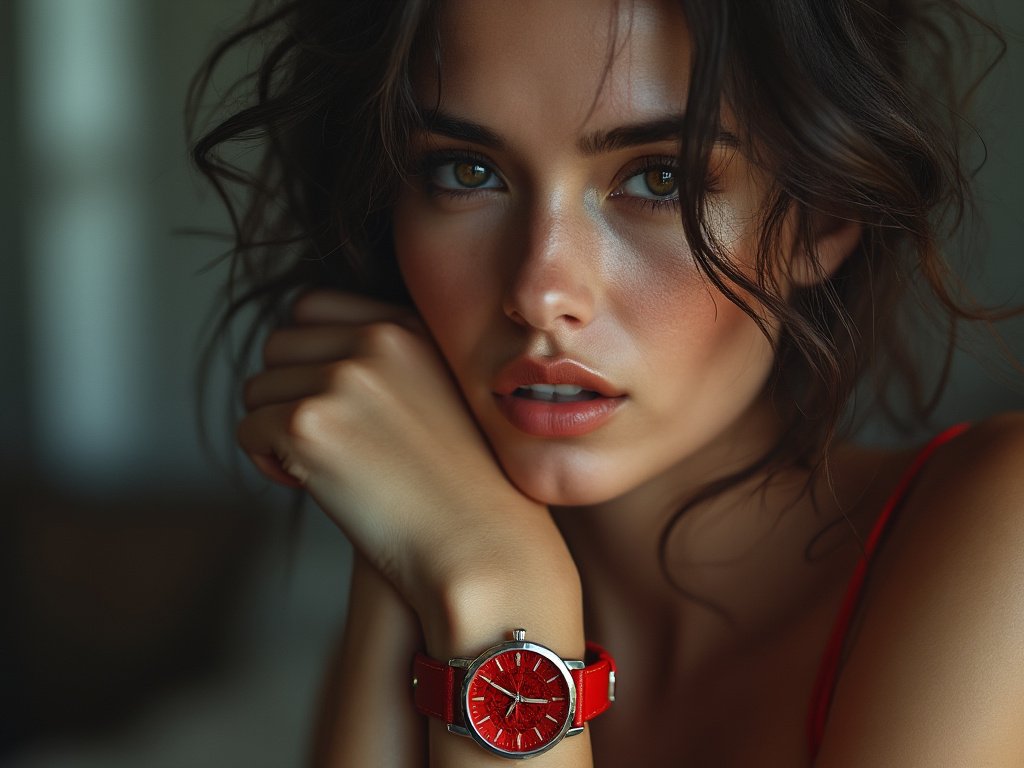
Popular Color Choices in Modern Watchmaking
The spectrum of watch colors available today is vast, reflecting diverse tastes and trends in the fashion world. From classic hues to daring new shades, watchmakers are pushing the boundaries of color in exciting ways.
Analyzing Trending Watch Colors of the Year
Each year brings a new set of color trends in the watch industry, often influenced by broader fashion and design movements. This year, we’re seeing a surge in earthy, nature-inspired tones. Sage green has emerged as a frontrunner, offering a fresh, calming presence on the wrist that resonates with the growing eco-conscious consumer base.
Another color making waves is coral, a vibrant yet soft hue that adds a warm, energetic touch to timepieces. These trending colors often reflect societal moods and cultural shifts.
For instance, the rise of pastel shades in watches mirrors a broader trend towards softer, more soothing aesthetics in a world craving comfort and tranquility.
Classic vs. Contemporary Color Choices in Watches
While bold new colors are capturing attention, classic watch hues continue to hold their ground. Traditional colors like black, silver, and gold remain popular for their timeless elegance and versatility. However, these classics are being reimagined with modern twists.
Rose gold, for example, has surged in popularity, offering a warmer, more romantic take on traditional gold watches. In the contemporary space, we’re seeing an influx of unconventional colors.
Electric blue, vibrant purple, and even neon yellow are making appearances in watch collections, appealing to those who view their timepieces as bold fashion statements rather than merely functional accessories.
The Rise of Pastel and Neon Watch Shades
At opposite ends of the intensity spectrum, both pastel and neon watch shades are having a moment. Pastel watches in soft pink, baby blue, and mint green offer a subtle way to incorporate color into one’s wardrobe. These gentle hues are particularly popular in women’s watches but are increasingly crossing over into unisex and men’s styles.
They evoke a sense of calm and nostalgia, perfect for those seeking a softer aesthetic. On the flip side, neon watches are making a comeback, reminiscent of the bold styles of the 1980s and 90s.
Fluorescent yellows, electric pinks, and acid greens are turning watches into wearable art pieces. These eye-catching timepieces are particularly popular among younger consumers and in sports watches, where high visibility is prized.
The contrast between these two trends highlights the diverse ways in which color is being used to express individuality and style in modern watchmaking.
The Impact of Colorful Watches on Fashion Trends
Watches with intense colors have transcended their role as mere timekeeping devices to become pivotal elements in shaping contemporary fashion trends. Their influence extends far beyond the wrist, affecting everything from outfit coordination to broader style movements.
How Colorful Watches are Influencing Outfit Choices
The rise of multicolored watches has revolutionized the way people approach outfit planning. No longer an afterthought, these vibrant timepieces are often the starting point for assembling an ensemble.
A bold red watch, for instance, might inspire a monochromatic look with subtle red accents throughout the outfit. Alternatively, a pastel blue timepiece could serve as a calming counterpoint to an otherwise edgy, dark-toned wardrobe.
Fashion-forward individuals are using their bold watches as statement pieces, building entire looks around these wrist-worn focal points. This shift has led to a more thoughtful, coordinated approach to dressing, where accessories play a central role in defining personal style.
Celebrity Endorsements and Their Effect on Watch Color Trends
Celebrity influence in the world of chromatic watches cannot be overstated. When a high-profile figure is spotted wearing a particular watch color, it often triggers a surge in demand.
Take, for example, the explosion of interest in green watches after several A-list celebrities were seen sporting emerald and olive-toned timepieces on red carpets. These endorsements, whether paid or organic, have the power to catapult certain colors from niche choices to must-have trends.
Social media amplifies this effect, with celebrity watch choices being dissected and emulated by fans worldwide. As a result, watch brands are increasingly collaborating with celebrities to create signature Vibrant watches, further blurring the lines between horology and pop culture.
The Role of Social Media in Popularizing Vibrant Timepieces
Social media platforms have become virtual runways for multicolored watches, with Instagram and Pinterest leading the charge. The visually-driven nature of these platforms is perfectly suited to showcasing the aesthetic appeal of vibrantly hued timepieces.
Watch enthusiasts and fashion influencers regularly post wrist shots, creating a constant stream of inspiration for their followers. Hashtags like #ColorfulWatches and #WatchesOfInstagram have millions of posts, indicating the massive online community dedicated to this trend.
Moreover, social media allows for real-time tracking of color trends, with certain hues going viral almost overnight. This immediate feedback loop has prompted watch brands to be more responsive and experimental with their color offerings, often releasing limited edition colors based on social media engagement and trends.
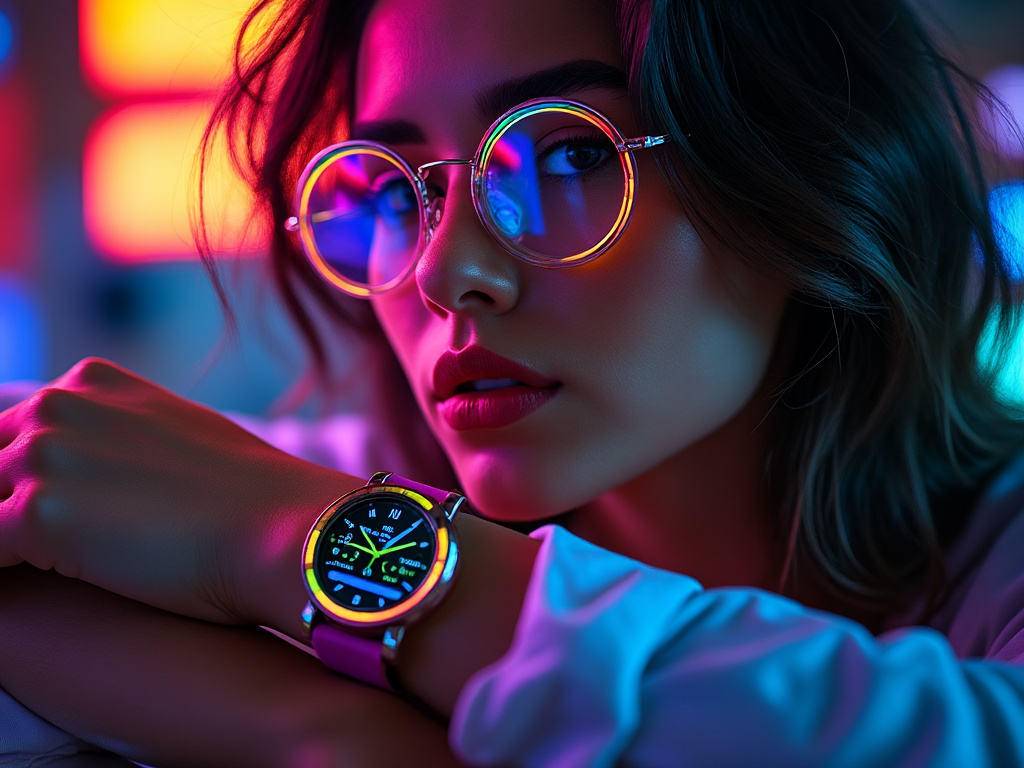
Sustainability and Eco-Friendly Colorful Watches
As environmental consciousness grows, the watch industry is adapting by incorporating sustainable practices and eco-friendly materials into the production of timepieces in different colors. This shift is not only reshaping manufacturing processes but also influencing color choices and consumer preferences.
Eco-Conscious Materials in Colorful Watch Production
The push for sustainability has led to innovative approaches in creating multicolored watches. Many brands are now using recycled materials for watch cases and straps. For instance, ocean plastic is being transformed into vibrant watch components, not only reducing waste but also creating unique color variations.
Plant-based dyes are replacing synthetic colorants, offering a more natural and less toxic alternative for coloring watch faces and straps. Some companies are even experimenting with biodegradable materials for watch parts, ensuring that these colorful accessories don’t leave a lasting impact on the environment.
These eco-conscious materials often come with their own unique color palettes, influencing the aesthetic direction of sustainable watches.
Natural Dyes and Their Impact on Watch Color Palettes
The use of natural dyes in watch production is reviving traditional color-making techniques and introducing new hues to the market. These dyes, derived from plants, minerals, and sometimes even insects, offer a softer, more organic color spectrum.
Indigo from woad plants creates deep blues, while madder root produces rich reds and pinks. These natural pigments often result in more muted, earthy tones compared to their synthetic counterparts.
However, this limitation is being embraced as part of the charm of eco-friendly watches. The subtle variations and sometimes unpredictable results of natural dying processes make each watch unique, appealing to consumers who value individuality and craftsmanship.
This trend towards natural dyes is not just about aesthetics; it’s a statement about reconnecting with nature and traditional practices in our increasingly technological world.
Consumer Demand for Environmentally Friendly Watch Options
The market for eco-friendly Vibrant watches is growing rapidly, driven by environmentally conscious consumers. These buyers are not just looking for sustainable materials; they’re seeking transparency in the entire production process, from sourcing to packaging.
This demand is pushing watch brands to innovate and clearly communicate their environmental initiatives. Some companies are adopting a ‘less is more’ approach, offering limited color options but ensuring each shade is produced sustainably.
Others are creating modular designs that allow for easy repair and part replacement, extending the life of the watch and reducing waste. As consumers become more educated about the environmental impact of their purchases, they’re willing to pay a premium for watches that align with their values.
This shift is encouraging even traditional luxury watch brands to explore more sustainable options in their bold watch lines, signaling a broader industry transformation towards eco-friendly practices.
Collecting and Investing in Colorful Watches
The world of pigmented watches has opened up new avenues for collectors and investors, offering unique opportunities in the luxury timepiece market. As these vibrant timepieces gain popularity, their potential as collectibles and investment pieces is becoming increasingly apparent.
Limited Edition Colorful Watches as Collectibles
Limited edition multihued watches have become highly sought-after items in the collector’s market. Watch brands are capitalizing on this trend by releasing special color variants in restricted numbers, often tied to specific events, anniversaries, or collaborations.
These pieces are not just timekeepers; they’re wearable art that tells a story. For instance, a watch released in a unique shade of blue to commemorate an ocean conservation effort can become a prized possession for both watch enthusiasts and environmental advocates.
The exclusivity of these limited runs drives up demand and, consequently, value. Collectors are drawn to the rarity factor, knowing that owning one of these colorful timepieces puts them in an elite group.
As these watches age, their historical significance often increases, making them valuable not just for their aesthetics but also for their place in horological history.
Market Trends in Vibrant Watch Investments
The investment potential of bright and vibrant watches in different colors is an emerging trend in the luxury goods market. While traditional investment watches have typically been in classic metals like gold or platinum, colorful timepieces are carving out their own niche.
Certain colors, particularly those associated with specific brands or models, can command premium prices in the secondary market. For example, watches in ‘Tiffany Blue’ or ‘Ferrari Red’ often see significant appreciation due to their brand associations and limited availability.
Market analysts are noting that unique or groundbreaking uses of color in watch design can be key factors in determining future value. However, as with any investment, the colorful watch market can be volatile.
Trends can shift rapidly, and what’s in vogue today might be out of fashion tomorrow. Savvy investors are looking at factors like brand reputation, innovation in color technology, and cultural relevance when assessing the long-term value of watches in different hues.
Tips for Building a Diverse Colorful Watch Collection
For those looking to build a collection of colorful watches, diversity is key. A well-rounded collection might include:
- A range of color intensities, from subtle pastels to bold neons
- Watches that represent different color techniques, such as enamel, PVD coating, and ceramic
- Pieces from various eras, showcasing the evolution of Vibrant watches
- Limited edition models that tell unique stories or commemorate special events
- Watches that utilize innovative color-changing technologies
- A mix of high-end luxury pieces and more accessible brands known for color expertise
- Timepieces that represent different watch styles, from dress watches to sports models
- Colors that complement each other when displayed together
- Watches that showcase different cultural influences in color choices
- Pieces that demonstrate technological advancements in Vibrant watch manufacturing
- Sustainable and eco-friendly multihued watches to reflect contemporary values
Building such a collection requires patience, research, and a keen eye for quality and authenticity. It’s important to purchase from reputable sources and to maintain proper documentation for each piece.
Networking with other collectors and staying informed about market trends can also help in making wise acquisition decisions. Remember, the goal is not just to amass a variety of colors, but to curate a collection that tells a compelling story about the artistry and innovation in watchmaking.

The Technical Aspects of Multihued Watch Manufacturing
The creation of colorful watches involves a fascinating blend of traditional craftsmanship and cutting-edge technology. Understanding these technical aspects can deepen appreciation for these vibrant timepieces and inform purchasing decisions.
Innovative Techniques in Applying Color to Watch Components
Watch manufacturers are constantly pushing the boundaries of color application techniques to achieve more vibrant, durable, and unique finishes. One of the most revolutionary methods is the use of nano-ceramic coatings.
This process involves applying ultra-thin layers of ceramic material to metal surfaces, allowing for a wide range of colors with exceptional scratch resistance. Another innovative technique is the use of galvanic treatments, where electric currents are used to deposit bold metal ions onto watch components, creating rich, metallic hues that are both eye-catching and long-lasting.
For more organic looks, some manufacturers are revisiting traditional enameling techniques, but with modern twists. By combining age-old methods with contemporary materials, they’re able to create depth and texture in watch dials that were previously unattainable.
Challenges in Maintaining Color Integrity Over Time
One of the biggest challenges in chromatic watch manufacturing is ensuring the longevity of the color. Exposure to sunlight, chemicals, and everyday wear can cause fading or discoloration over time.
To combat this, watchmakers are developing new UV-resistant pigments and protective coatings. Some brands are even incorporating photochromic materials into their watches, which change color in response to light exposure, turning a potential problem into a unique feature.
Another challenge is maintaining color consistency across different materials. A watch that combines a colorful metal case with a polymer strap, for instance, requires careful color matching to ensure a cohesive look.
Manufacturers are addressing this by developing more precise color measurement and matching techniques, often borrowing technologies from other industries like automotive paint.
Advancements in Color-Changing and Mood Watch Technologies
The future of bold watches lies in dynamic, interactive color technologies. Some watchmakers are experimenting with thermochromic materials that change color based on temperature, allowing the watch to reflect the wearer’s body heat or environmental conditions.
Others are developing watches with e-ink displays that can change color and pattern at the touch of a button, offering unprecedented customization. Perhaps most excitingly, research is being conducted into integrating mood-sensing technologies with color-changing watch faces.
These watches could potentially change color based on the wearer’s emotional state, detected through skin conductivity or heart rate. While still in early stages, these advancements hint at a future where watches are not just colorful accessories, but dynamic expressions of our internal and external environments.
Colorful Watches in Professional Settings
The integration of colorful watches into professional wardrobes has been a gradual but significant shift in workplace fashion. As dress codes evolve and personal expression becomes more valued, vibrant timepieces are finding their place in various professional environments.
Balancing Professionalism with Personal Style Through Watch Colors
In today’s diverse work environments, the key to wearing pigmented watches professionally is balance. A subtly Vibrant watch can add a touch of personality to a conservative outfit without being distracting.
For instance, a navy blue watch face paired with a classic leather strap can complement a traditional suit while still expressing individuality. In more creative fields, bolder colors might be appropriate, serving as conversation starters or reflections of a company’s brand colors.
The trick is to consider the overall impact of the watch within the context of the entire outfit and workplace culture. A brightly Vibrant watch that might be perfect for a marketing agency could be out of place in a law firm.
It’s about finding that sweet spot where personal style meets professional expectations.
Industry-Specific Trends in Colorful Watch Preferences
Different industries have developed their own unspoken rules and preferences when it comes to chromatic watches. In the tech sector, for example, smartwatches with customizable colorful displays have become almost ubiquitous, reflecting the industry’s embrace of technology and flexibility.
Financial services, while traditionally conservative, have seen a rise in the popularity of watches with subtle color accents, like a red second hand or a green bezel, as a way to stand out subtly.
Creative industries like advertising or fashion often welcome more expressive timepieces, with some professionals using their watches as an extension of their creative portfolio. Even in traditionally conservative fields like law or medicine, there’s a growing acceptance of tastefully multi-colored watches, particularly in client-facing roles where relatability and approachability are valued.
How Colorful Watches are Redefining Workplace Accessories
Colorful watches are playing a significant role in the broader trend of personalizing professional attire. They’re part of a movement that’s redefining what it means to dress for success.
Where once uniformity was prized, there’s now a growing appreciation for authenticity and individual expression. This shift is particularly noticeable among younger professionals who view their watches as statements of personal brand rather than just status symbols.
Companies are taking note, with some even incorporating watch colors into their dress code guidelines. For instance, some organizations encourage employees to wear watches that match company colors on certain days, fostering a sense of unity while still allowing for personal style.
As remote work becomes more common, watches that are in different hues are also serving as a way for professionals to maintain a sense of put-togetherness and routine, even when working from home. They’re a reminder that even in casual settings, time management and professionalism are still valued.
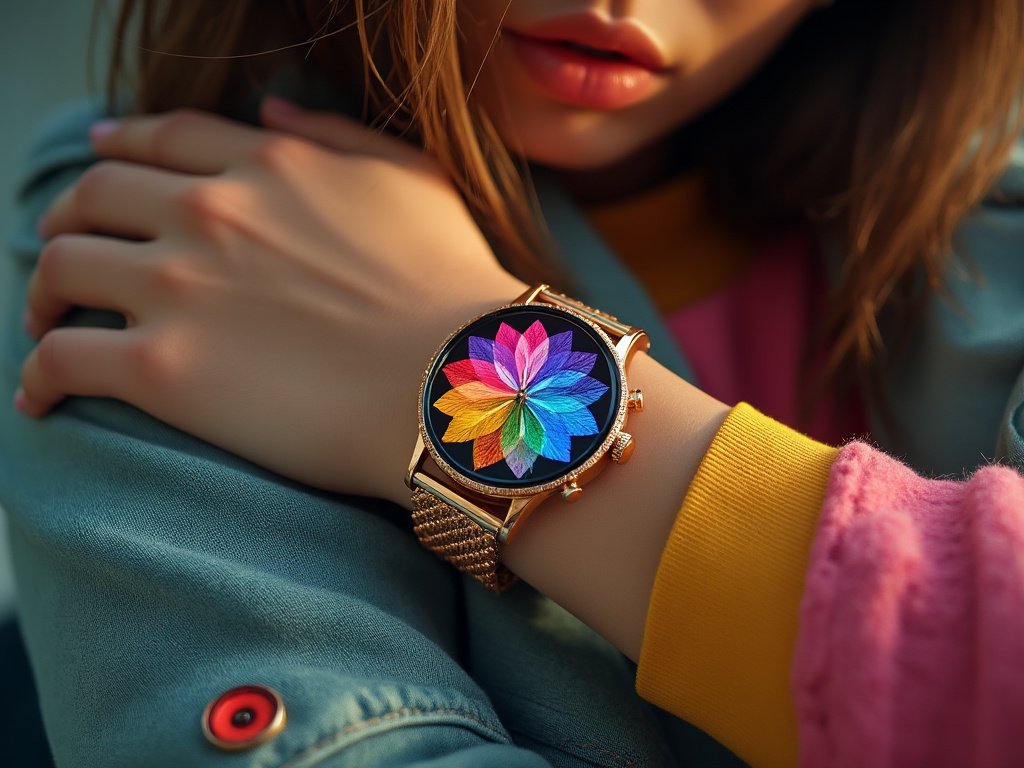
The Global Influence of Colorful Watches
The trend of colorful watches has transcended geographical boundaries, becoming a global phenomenon that reflects and shapes diverse cultural aesthetics. This worldwide embrace of colorful timepieces has led to fascinating regional variations and cross-cultural influences.
Cultural Differences in Watch Color Preferences
Watch color preferences often reflect deeper cultural values and aesthetic traditions. In many Asian markets, for instance, red watches are highly popular due to the color’s association with luck and prosperity.
Gold-toned watches remain a staple in Middle Eastern countries, where they’re seen as symbols of success and refinement. European markets often lean towards more subdued, classic colors, with a preference for watches that can transition seamlessly from day to evening wear.
In contrast, the American market has shown a growing appetite for bolder, more experimental colors, reflecting a culture that values individuality and self-expression. Understanding these cultural nuances is crucial for watch brands looking to expand globally.
It’s not just about translating marketing materials; it’s about creating color options that resonate with local tastes and traditions while still maintaining brand identity.
International Collaborations in Vibrant Watch Design
The global nature of the watch industry has fostered fascinating international collaborations in multicolored watch design. We’re seeing Swiss watchmaking precision combined with Japanese color aesthetics, or German engineering paired with Italian flair for color.
These collaborations often result in unique timepieces that blend different cultural perspectives on color and design. For example, a recent collaboration between a Swiss luxury watch brand and a renowned Chinese artist resulted in a limited edition series featuring traditional Chinese color symbolism interpreted through a Western horological lens.
Such cross-cultural projects not only produce visually striking watches but also serve as bridges between different artistic traditions. They challenge designers to think beyond their cultural norms and create timepieces with truly global appeal.
Emerging Markets and Their Impact on Watch Color Trends
Emerging markets are playing an increasingly significant role in shaping global watch color trends. As countries like India, Brazil, and Nigeria see a rise in disposable income and a growing middle class, their unique color preferences are influencing watch designs worldwide.
In India, for example, there’s a growing demand for watches in vibrant, festive colors that complement traditional attire. This has led to the development of watch lines specifically catering to the Indian market, featuring rich purples, magentas, and turquoises.
Similarly, the bold, tropical palette favored in Brazil is inspiring watch designs that capture the country’s vivacious spirit. These emerging markets are not just consumers but trendsetters, pushing established watch brands to expand their color offerings and inspiring new, locally-born watch companies.
As these markets continue to grow, we can expect to see an even more diverse and colorful global watch landscape, with influences flowing in multiple directions and creating a truly international color palette in the world of horology.
DIY and Customization in Colorful Watches
The rise of DIY culture and the desire for personalization have significantly impacted the colorful watch market, leading to a surge in customizable options and inspiring creative enthusiasts to modify their timepieces.
Customizable Watch Options for Color Enthusiasts
Watch brands are increasingly offering customization options to cater to consumers’ desire for unique, personalized timepieces. Many companies now provide online customization tools where customers can mix and match different colorful dials, straps, and cases to create their perfect watch.
Some high-end brands even offer bespoke services, allowing clients to work directly with designers to create one-of-a-kind colorful watches. For the tech-savvy, smartwatches with customizable displays offer endless possibilities for color experimentation.
This trend towards customization is not just about aesthetics; it’s about giving consumers a sense of ownership and connection to their watches. By choosing the colors themselves, wearers feel more invested in their timepieces, often leading to stronger brand loyalty.
Tips for Safely Modifying Watch Colors at Home
For DIY enthusiasts, modifying watch colors at home can be an exciting project, but it requires caution and the right techniques. Here are some tips for safe and effective watch color modification:
- Start with the strap: Changing a watch strap is the easiest and safest way to add color. Experiment with different materials and hues.
- Use watch-specific paints: If painting watch components, use paints designed for metal or plastic surfaces. Ensure they’re non-toxic and durable.
- Protect the movement: When modifying the case or dial, always remove the movement first to prevent damage.
- Consider reversible options: Vinyl wraps or removable coatings allow for color changes without permanent alterations.
- Research thoroughly: Before attempting any modifications, study tutorials and seek advice from experienced modders.
- Start small: Begin with simple projects and gradually work up to more complex modifications as you gain experience.
- Be mindful of warranties: Remember that DIY modifications often void manufacturer warranties.
The Rise of Modding Communities in the Watch World
The watch modding community has grown significantly, fueled by social media and online forums. These communities serve as hubs for enthusiasts to share ideas, techniques, and showcase their colorful creations.
Many modders specialize in specific brands or styles, developing expertise in transforming particular watch models with custom colors and finishes. This subculture has even influenced mainstream watch design, with some brands releasing models inspired by popular mods.
The modding community also plays a crucial role in sustainability, giving new life to old watches through color updates and repairs. As this community continues to grow, it’s pushing the boundaries of what’s possible in watch design and challenging traditional notions of luxury and personalization in the watch industry.
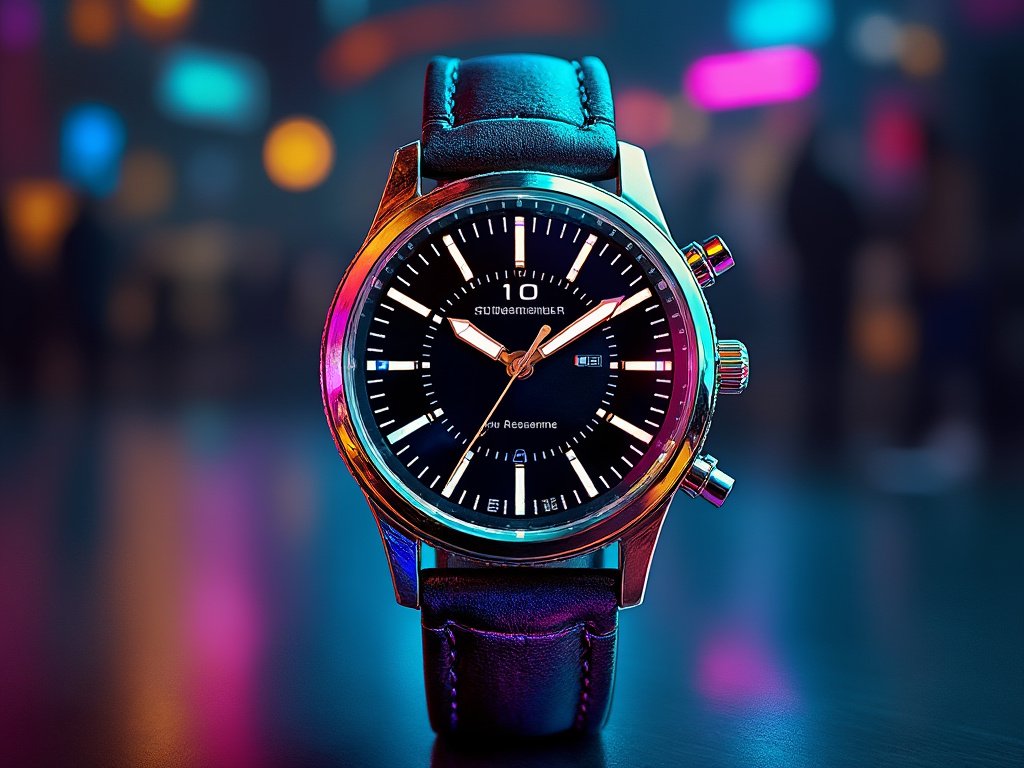
Summary Table
| Aspect | Description | Impact |
|---|---|---|
| Color Psychology | Use of color theory in watch design | Enhances emotional connection and personal expression |
| Technological Advancements | New materials and techniques for coloring watches | Enables more vibrant, durable, and diverse color options |
| Fashion Trends | Influence of chromatic watches on outfit choices | Watches becoming central to fashion coordination |
| Sustainability | Eco-friendly materials and natural dyes | Growing market for environmentally conscious timepieces |
| Customization | DIY and brand-offered personalization options | Increased consumer engagement and unique designs |
| Global Influence | Cultural variations in color preferences | Diverse global market with region-specific trends |
| Professional Use | Integration of Vibrant watches in workplaces | Redefining professional accessories and personal branding |
| Collectibility | Limited edition and rare colorful watches | New opportunities for collectors and investors |
| Manufacturing Challenges | Maintaining color integrity over time | Driving innovation in watchmaking techniques |
| Modding Communities | Rise of watch modification enthusiasts | Pushing boundaries of watch design and personalization |
Conclusion
The surge in popularity of pigmented watches represents more than just a passing trend; it’s a reflection of our evolving relationship with personal style, technology, and self-expression. As we’ve explored throughout this article, Vibrant watches have become powerful tools for individual expression, blending functionality with fashion in ways that were unimaginable just a few decades ago.
They’ve challenged traditional notions of what a watch should look like and how it should function in our daily lives.
Looking to the future, the multicolored watch trend shows no signs of slowing down. If anything, it’s likely to become even more dynamic and diverse. We can anticipate further technological advancements that will push the boundaries of color application and customization in watches.
The growing emphasis on sustainability will likely drive innovations in eco-friendly coloring processes and materials. As global markets continue to influence each other, we may see a rich tapestry of cultural color preferences creating new and exciting watch designs.
Ultimately, the rise of colorful watches is a testament to the enduring appeal of the wristwatch itself. In an age where smartphones could have made traditional timepieces obsolete, watches have reinvented themselves as essential accessories that do more than just tell time – they tell our stories.
Whether it’s a subtle pastel tone that complements a professional outfit or a bold neon statement piece that lights up a night out, Vibrant watches have secured their place on our wrists and in our hearts, ticking away as colorful companions to our diverse lives.

Frequently Asked Questions
How do I choose the right colorful watch for my skin tone?
Consider your skin’s undertone when selecting a watch color. Warm undertones pair well with gold, earth tones, and reds, while cool undertones complement silver, blues, and purples. For neutral undertones, most colors work well. Try on different options to see which enhances your natural coloring.
Are colorful watches appropriate for formal events?
Absolutely! Choose watches in sophisticated colors like deep blue, burgundy, or emerald for formal occasions. Metallic finishes in rose gold or gunmetal can also work well. The key is to ensure the watch complements your attire without overpowering it.
How can I maintain the color of my watch?
To preserve your watch’s color, avoid exposure to harsh chemicals and prolonged sunlight. Clean it regularly with a soft cloth, and store it in a cool, dry place when not in use. For leather straps, use leather conditioner to prevent fading and cracking.
What are some popular color combinations for watches?
Popular combinations include blue and rose gold, black and red, green and silver, and all-white designs. Two-tone watches combining different metal colors are also trendy. Ultimately, the best combination is one that resonates with your personal style.
Can I change the color of my existing watch?
Yes, there are several ways to change your watch’s color. The easiest is to swap out the strap. For more permanent changes, you can have your watch professionally refinished or, if you’re DIY-inclined, use specialized paints or wraps designed for watches.
Are there any colors to avoid in professional settings?
While workplace norms vary, it’s generally best to avoid extremely bright or neon colors in conservative professional environments. Stick to more subdued tones or classic colors with subtle accents for versatility across different settings.
How do smartwatches fit into the Vibrant watch trend?
Smartwatches are at the forefront of the colorful watch trend, offering customizable displays that can change color and design instantly. Many also come with interchangeable straps, allowing for easy color coordination with outfits.
What’s the difference between limited edition colors and standard colors?
Limited edition colors are produced in small quantities, often as part of special collections or collaborations. They tend to be more unique and can potentially increase in value over time. Standard colors are part of a brand’s regular lineup and are more readily available.

Joanna Perez, with a degree in Creative Writing, excels in recommending distinctive clothing color mixes and trends that deeply connect with readers. She simplifies the often daunting task of color selection, making fashion decisions more personalized and impactful. Her passion for vibrant color palettes and the stories they tell makes her an indispensable voice in the fashion community.
Reviewed By: Marcella Raskin and Anna West
Edited By: Lenny Terra
Fact Checked By: Sam Goldman
Photos Taken or Curated By: Matthew Mansour
